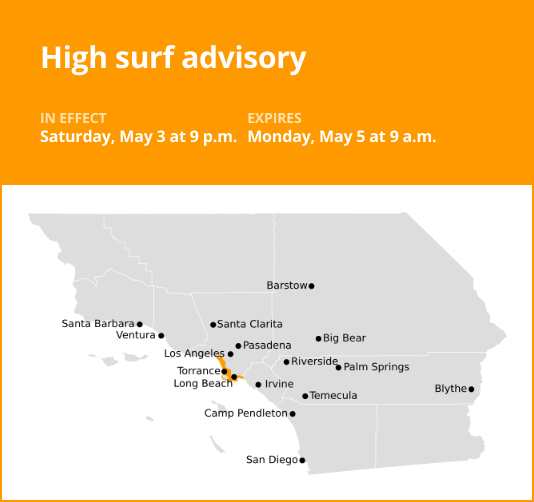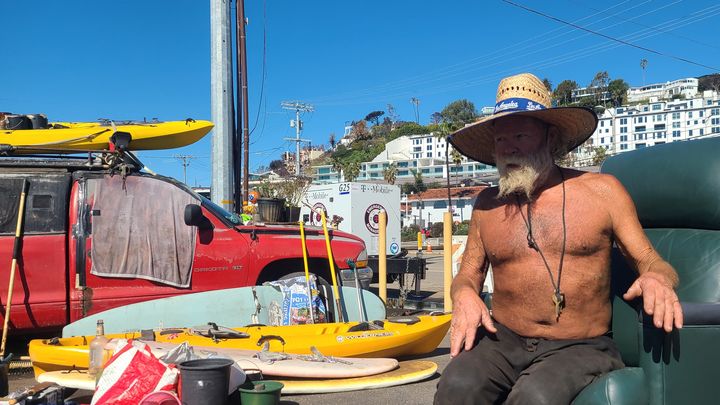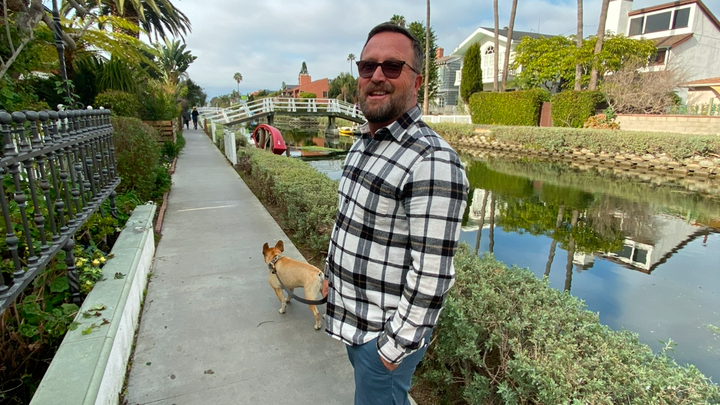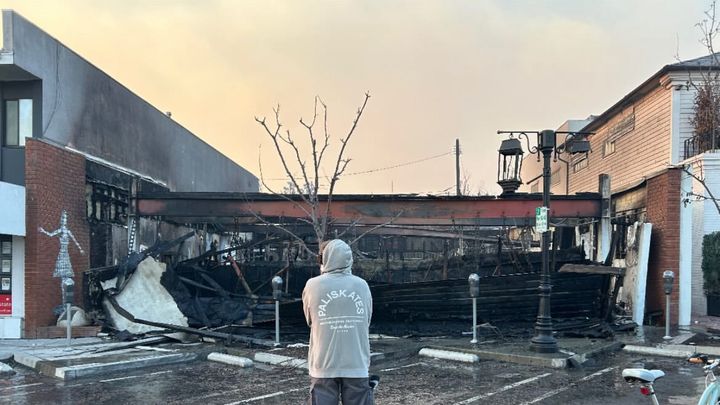- Malibu Beach Homes Cleared of Fire DebrisShacked Mag - 02 Apr 2025 - 0 Comments
After almost 3 months, homes on the beach in Malibu are finally being fully cleared of all fire...
- Palisades Fire Damage - Hill above Alphabet Streets Destroyed Shacked Mag - 26 Mar 2025 - 0 Comments
Touring the devastating damage from the Palisades Fire to all the homes on the hillside above...
- Mudslide Destroys Home That Survived Fire In Pacific PalisadesShacked Mag - 20 Mar 2025 - 0 Comments
PACIFIC PALISADES A home on Castellammare Drive that survived the Palisades Fire was completely...
- Fire Destruction Recovery - Tour of he Village in Pacific PalisadesShacked Mag - 19 Mar 2025 - 0 Comments
A updated tour of the current status of The Village (downtown area) of the Pacific Palisades. ...
- How America’s Greatest Ocean Park FailedShacked Mag - 11 May 2025 - 0 Comments
This is the story of Pacific Ocean Park. Once a rival to Disneyland, this popular so-cal amusement...
- Santa Monica Answers Questions About Promenade Entertainment ZoneShacked Mag - 10 May 2025 - 0 Comments
The City of Santa Monica's Planning Manager Jing Yeo answered questions about the proposed...
- Palisades Fire Recovery: Burnt Malibu Homes along Pacific Coast Highway UpdateShacked Mag - 01 May 2025 - 0 Comments
Tour of the clean up progress on the beach front properties along Pacific Coast Highway in Malibu...
- Can I Surf Sunset Now?Shacked Mag - 21 Apr 2025 - 0 Comments
Here are answers to questions we've been getting about the status of surfing at Sunset: NOTE:...
- Will Rogers Beach & Bike Path ReopensShacked Mag - 18 Apr 2025 - 0 Comments
The beach and the bike path at Rogers State Beach in Pacific Palisades finally reopens after being...
- Pacific Coast Highway Will ReopenShacked Mag - 13 Apr 2025 - 0 Comments
Governor Gavin Newsom today announced an all-hands-on-deck effort to support businesses and tourism...
- Palisade Fire Soil Testing Results Elevated Lead LevelsShacked Mag - 11 Apr 2025 - 0 Comments
Public Health Releases Preliminary Soil Testing Results With Unanticipated Elevated Lead Levels...
- Topanga Beach Palidades Fire Recovery UpdateShacked Mag - 07 Apr 2025 - 0 Comments
After almost 3 months, this video shows the current conditioins of the beach, creek, parking...
- Malibu Beach Homes Cleared of Fire DebrisShacked Mag - 02 Apr 2025 - 0 Comments
After almost 3 months, homes on the beach in Malibu are finally being fully cleared of all fire...
- Palisades Fire Damage - Hill above Alphabet Streets Destroyed Shacked Mag - 26 Mar 2025 - 0 Comments
Touring the devastating damage from the Palisades Fire to all the homes on the hillside above...
- Mudslide Destroys Home That Survived Fire In Pacific PalisadesShacked Mag - 20 Mar 2025 - 0 Comments
PACIFIC PALISADES A home on Castellammare Drive that survived the Palisades Fire was completely...
- Fire Destruction Recovery - Tour of he Village in Pacific PalisadesShacked Mag - 19 Mar 2025 - 0 Comments
A updated tour of the current status of The Village (downtown area) of the Pacific Palisades. ...
- How America’s Greatest Ocean Park FailedShacked Mag - 11 May 2025 - 0 Comments
This is the story of Pacific Ocean Park. Once a rival to Disneyland, this popular so-cal amusement...
- Santa Monica Answers Questions About Promenade Entertainment ZoneShacked Mag - 10 May 2025 - 0 Comments
The City of Santa Monica's Planning Manager Jing Yeo answered questions about the proposed...
- Palisades Fire Recovery: Burnt Malibu Homes along Pacific Coast Highway UpdateShacked Mag - 01 May 2025 - 0 Comments
Tour of the clean up progress on the beach front properties along Pacific Coast Highway in Malibu...
- Can I Surf Sunset Now?Shacked Mag - 21 Apr 2025 - 0 Comments
Here are answers to questions we've been getting about the status of surfing at Sunset: NOTE:...
Surf Spot Galleries
Surf Photos - Venice Breakwater - Friday 3-28-2025
Shacked Mag - 28 Mar 2025 - 0 Comments
Here's surfing photos from Friday, April 28th, at the Venice Breakwater. This set of surf photos was shot by Six12 Media. Here's some surfing photos...
News & Upcoming Events
2 Arrested For Breaking Into Cars At Ocean Park
Shacked Mag - 10 May 2025 - 0 Comments
On Saturday, around noon, 2 guys were chased down and arrested by Santa Monica Police after they were seen breaking into vehicles in the Ocean...
Posted on 07 May 2025 - 0 Comments
Posted on 07 May 2025 - 0 Comments
Posted on 06 May 2025 - 0 Comments
Posted on 05 May 2025 - 0 Comments
Featured Surfers
Event Coverage
Venice Beach Cinco de Mayo Car Show
Shacked Mag - 07 May 2025 - 0 Comments
The Westside Classics Car Club presents Cinco de Mayo celebration at Venice Beach on May 4th 2025. Lowriders and classic cars from all over...
Posted on 03 May 2025 - 0 Comments
Posted on 08 Apr 2025 - 0 Comments
Posted on 24 Mar 2025 - 0 Comments
Posted on 19 Dec 2024 - 0 Comments
Arts / Lifestyle / Gear
How America’s Greatest Ocean Park Failed
Shacked Mag - 11 May 2025 - 0 Comments
This is the story of Pacific Ocean Park. Once a rival to Disneyland, this popular so-cal amusement park built on a pier, would quickly become...
Posted on 10 May 2025 - 0 Comments
Posted on 07 May 2025 - 0 Comments
Posted on 05 May 2025 - 0 Comments
Posted on 03 May 2025 - 0 Comments
Latest News
Santa Monica Answers Questions About Promenade Entertainment Zone
The City of Santa Monica's Planning Manager Jing Yeo answered questions about the proposed first-of-its kind "Entertainment Zone"...
2 Arrested For Breaking Into Cars At Ocean Park
On Saturday, around noon, 2 guys were chased down and arrested by Santa Monica Police after they were seen breaking into vehicles in...
Life Rolls On - They Will Surf Again
Hundreds of volunteers, people of all ages with disabilities, and entire families come together for an epic day in the ocean.
...
Annual Venice Beach Firefighters Station 63 Pancake Breakfast
It’s time again for the annual Venice Beach Firefighters Station 63 pancake breakfast.
Come out and support your local heroes...
Venice Beach Cinco de Mayo Car Show
The Westside Classics Car Club presents Cinco de Mayo celebration at Venice Beach on May 4th 2025. Lowriders and classic cars from...
Dead Body Found On Beach By Venice Skatepark
While surfers are surfing, skaters are skating, and tourists are touristing, officials are investigating a body found on the beach...
Pali Strong - Healing, Hope & Community by the Sea Event
To our friends and neighbors from Pacific Palisades to Malibu to Altadena/Pasadena/Sierra Madre...
In the wake of the fires...
Santa Monica Pier Bridge Construction Has Begun
Construction at Beach Parking Lot 1N started and parking remains available for all visitors.
Construction started early March at Beach...
Subscribe to:
Posts
(
Atom
)


























































Social Buttons